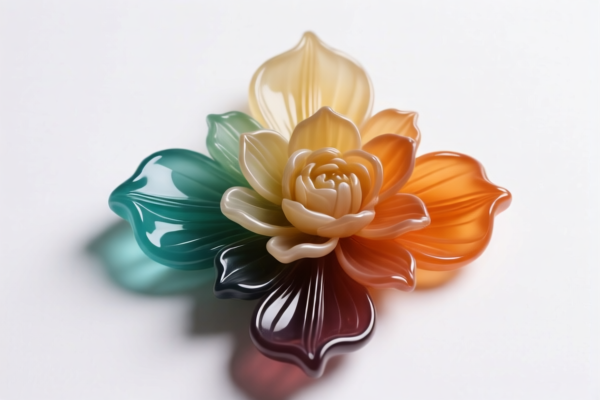| HS Code | Official Doc | Tariff Rate | Origin | Destination | Effective Date |
|---|---|---|---|---|---|
| 3926909989 | Doc | 42.8% | CN | US | 2025-05-12 |
| 9703900000 | Doc | 37.5% | CN | US | 2025-05-12 |
| 8306290000 | Doc | 30.0% | CN | US | 2025-05-12 |




Okay, let's break down the HS codes and tax implications for your "RESIN ORNAMENTS" declaration. Here's a structured analysis to help you understand the classification and potential costs:
Understanding HS Codes – A Quick Primer
HS codes (Harmonized System codes) are internationally standardized codes used to classify traded products. The first 6 digits are generally consistent worldwide, while additional digits can vary by country. Here's what the digits generally mean:
- Chapter (First 2 digits): Broad category of the product.
- Heading (First 4 digits): More specific classification within the chapter.
- Subheading (First 6 digits): Even more detailed classification.
- Additional Digits: Country-specific for further detail (e.g., specific rate, material, etc.).
Analysis of Your HS Codes
Let's examine each code you provided:
1. HS Code: 3926.90.99.89 – Other articles of plastics and articles of other materials of headings 3901 to 3914: Other: Other Other
- Chapter 39: Plastics and articles thereof. This indicates the ornament is primarily made of plastic.
- Heading 3926: Other articles of plastics and articles of other materials. This is a broad category for plastic items not specifically covered elsewhere.
- Subheading 3926.90: Other. This further specifies that it's a "catch-all" category within the broader "other" plastic articles.
- Additional Digits (99.89): This provides even more detail, likely specifying a particular type of plastic ornament not specifically listed.
- Tax Implications:
- Basic Duty: 5.3%
- Additional Duty: 7.5%
- Post April 2, 2025: Additional Duty increases to 30%
- Total Tax: 42.8%
2. HS Code: 9703.90.00.00 – Original sculptures and statuary, in any material: Other
- Chapter 97: Works of art, collectors’ pieces and antiques. This suggests the ornament is considered an artistic piece.
- Heading 9703: Original sculptures and statuary. This specifically classifies it as a sculpture or statuary.
- Subheading 9703.90: Other. This indicates it doesn't fall into a more specific sculpture category.
- Additional Digits (00.00): Further detail, likely indicating a general "other" sculpture.
- Tax Implications:
- Basic Duty: 0.0%
- Additional Duty: 7.5%
- Post April 2, 2025: Additional Duty increases to 30%
- Total Tax: 37.5%
3. HS Code: 8306.29.00.00 – Bells, gongs and the like, nonelectric, of base metal; statuettes and other ornaments, of base metal; photograph, picture or similar frames, of base metal; mirrors of base metal; and base metal parts thereof: Statuettes and other ornaments, and parts thereof: Other
- Chapter 83: Miscellaneous articles of base metal. This suggests the ornament is made of metal.
- Heading 8306: Statuettes and other ornaments of base metal.
- Subheading 8306.29: Other statuettes and ornaments.
- Additional Digits (00.00): Further detail, likely indicating a general "other" metal ornament.
- Tax Implications:
- Basic Duty: 0.0%
- Additional Duty: 0.0%
- Post April 2, 2025: Additional Duty increases to 30%
- Total Tax: 30.0%
Important Considerations & Recommendations:
- Material is Key: The HS code is highly dependent on the primary material of the ornament. If the ornament is a combination of materials (e.g., resin with metal accents), you need to determine the predominant material by weight or value. This will dictate the correct HS code.
- Artistic Merit: If you are classifying under HS Code 9703, be prepared to demonstrate the artistic merit of the ornament. Customs may require documentation (e.g., artist's statement, appraisal) to support this classification.
- Single vs. Mixed Materials: If the ornament contains multiple materials, the classification can become complex. You may need to consult with a customs broker to determine the correct code.
- Valuation: The declared value of the ornaments is crucial for tax calculation. Ensure accurate and justifiable valuation.
- April 2, 2025 Changes: Be aware of the upcoming changes in additional duties. Factor this into your cost calculations.
- Certifications: Depending on the material and destination country, you may need certifications (e.g., safety standards, origin certificates). Check the import requirements of the destination country.
- Need to verify the material and unit price of the goods.
Disclaimer: I am an AI assistant and cannot provide definitive customs advice. This information is for general guidance only. It is strongly recommended to consult with a licensed customs broker or import specialist for accurate classification and compliance. They can assess your specific products and ensure you meet all import regulations.
Customer Reviews
No reviews yet.